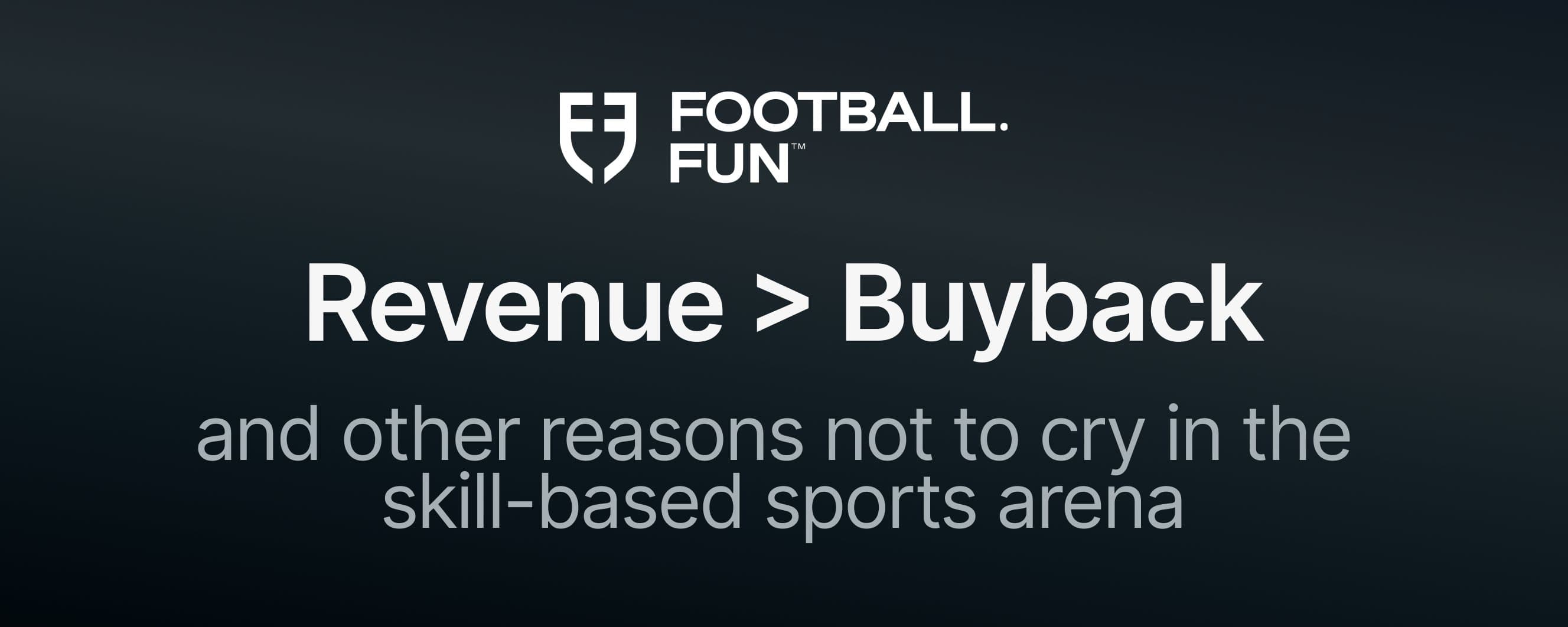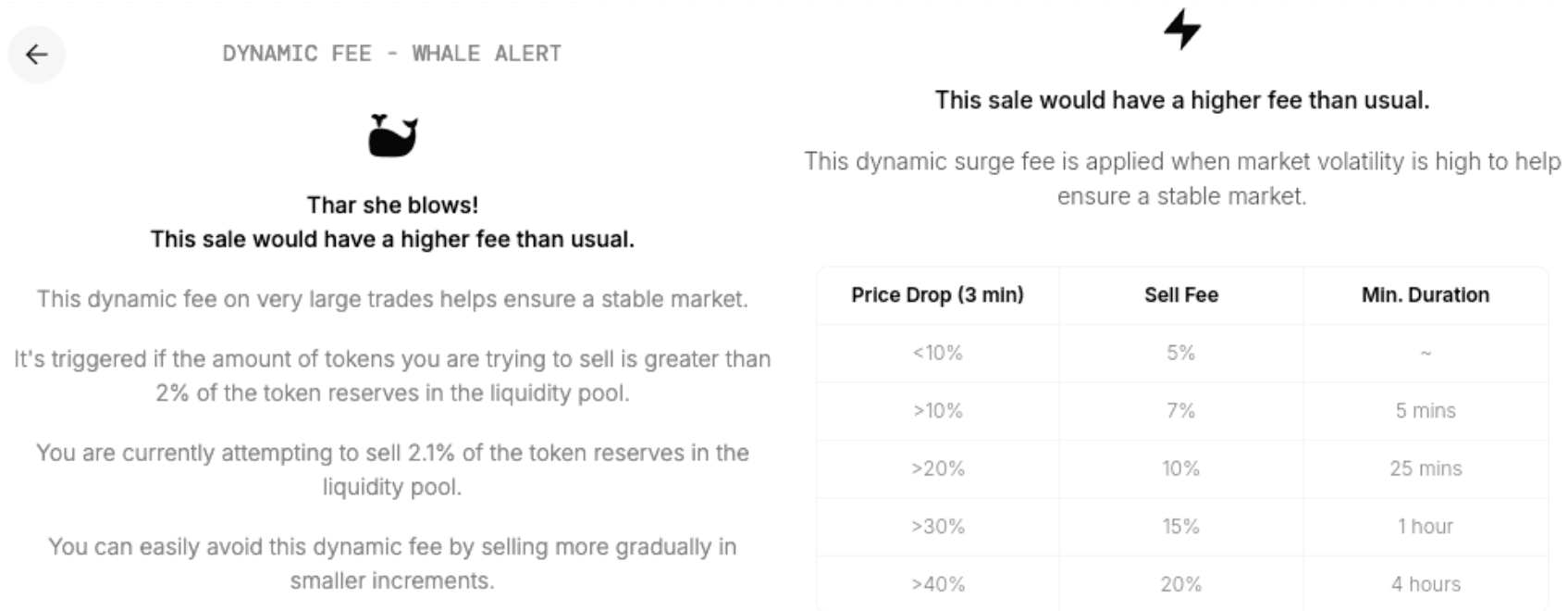What is Football.Fun?
Football.Fun (FDF) is a fantasy football-inspired game that blends sports fandom with crypto-powered trading. Launched on Base, it allows players to own tokenized versions of footballers whose values shift based on demand and in-game performance. Unlike platforms where you need to repurchase cards each season, FDF gives users permanent ownership. If you own a player now, that same asset carries forward for their career.

Football.Fun Breaks Down Growth, Revenue, and Challenges
After months of closed beta testing that showed strong retention, the team launched the Pro version two weeks ago. It quickly climbed to become the number one app on Base by revenue. With the rapid growth came both momentum and challenges, which FDF’s team broke down in their recent article/thread titled “Gotta Run a Business.”
Key Details from “Gotta Run a Business”
Retention before money
Football.Fun set out to prove that the game itself could stand on its own before bringing money into the picture. During the closed beta, the team focused on whether players actually enjoyed the experience. The result was clear: even without the chance to earn or speculate, the game pulled in around 2,500 monthly active users with more than 50 percent of them sticking around. That kind of retention in an early test is impressive for any product, let alone a Web3 one. The fact that most of this growth came from word of mouth added even more weight. It showed that people were recommending Football.Fun because they genuinely had fun, not because there was a payout waiting.

Football.Fun Player Packs
Marketing with networks and creators
When the Pro version finally launched, the team did not leave exposure up to chance. They rolled out a targeted campaign built for both sides of their audience: fantasy football fans who know the thrill of sports speculation, and crypto-native players who understand trading mechanics. About $50,000 went into paying creators across these niches, but the real strength came from organic sharing. With many of the team already connected in the crypto scene, FDF managed to dominate timelines within days.
Revenue model
One of the most important points addressed was how Football.Fun makes money. The platform’s main source of revenue is a 5 percent marketplace fee. Unlike other collectible games where players buy seasonal assets from the developer, FDF distributes player tokens at a base price to seed liquidity and then steps back. This means ownership is permanent, no annual repurchases, no artificial scarcity resets. To prevent abuse, the system also includes surge fees that can climb up to 20 percent when there is heavy selling. The goal is not to punish regular players but to push back against bot activity, fast flippers, and opportunists trying to extract value without contributing to the community.

Football.Fun Dynamic/Surge Fees
Challenges with attention
With breakout success comes extra pressure. The team admitted that alongside rapid growth came problems that tested their resolve. Bot farms targeted referral systems to siphon rewards, Discord raids flooded their servers with thousands of fake accounts spreading negativity, and rival communities launched campaigns of criticism. While frustrating, the team framed this as a sign that Football.Fun was making enough noise to be noticed as a threat. Every successful product in crypto gaming has gone through some version of this, and for FDF, these attacks served as a reminder that building something fun and rewarding is also about weathering external resistance.

Football.Fun Market Cap Fluctuations
Use of revenue
In the first ten days of the Pro launch, Football.Fun reported more than $2 million in revenue. Rather than holding this up as a headline number, the team outlined exactly how those funds would flow back into the ecosystem. Forty percent will be returned through a revenue share scheme designed to reward those who help grow the community. Gas fees on Base are fully covered so players don’t have to deal with constant signing or small transaction costs. Discounts and rebates will support loyal and high-volume users, keeping long-term players engaged. Buybacks of player assets are planned for the future as a way to stabilize liquidity pools and maintain healthy markets. Finally, a portion of the revenue goes into operations, though the team stressed they are lean, without the overhead of large offices or inflated staff costs.
What’s next
Looking forward, Football.Fun is focused on maintaining momentum beyond the initial launch buzz. Tournament rewards are set to be distributed, with prize pools growing alongside the rapid expansion of the marketplace. The first 100-player roster will soon be completed, creating a foundation of assets for the game’s ecosystem. A second Founders Pack is also on the horizon, offering early supporters access to new player tokens at the original $0.0125 entry price. In the longer term, the vision stretches beyond football. The team made it clear that their ambition is to build fun and rewarding games for multiple sports, with the NFL and NBA being strong candidates for future expansions.
Final Thoughts
Football.Fun’s first two weeks have been fast-moving, bringing both growth and scrutiny. The game has proven it can attract players who are here for more than quick profits, but the real test will be whether it can maintain momentum once the initial hype cools. By balancing sustainable economics with gameplay that people actually enjoy, FDF is aiming to establish itself as more than just another short-lived crypto trend.




